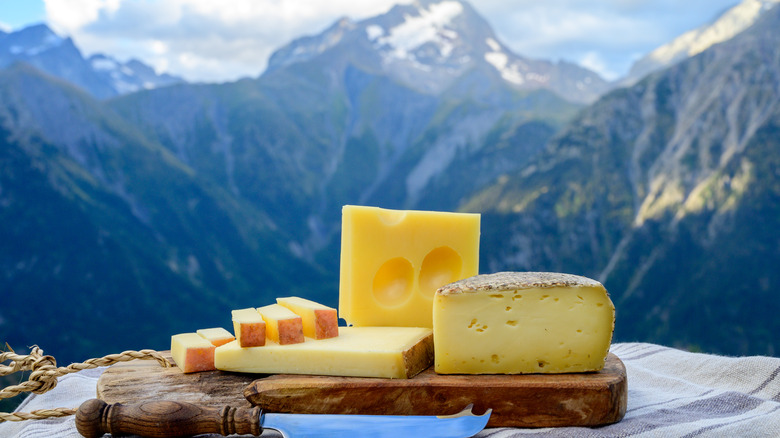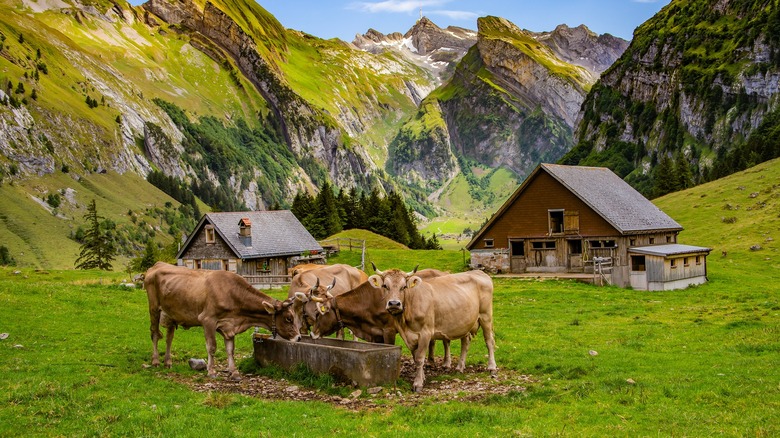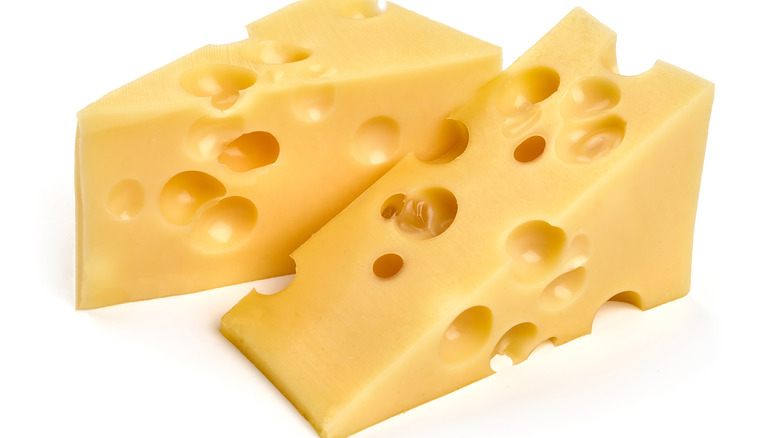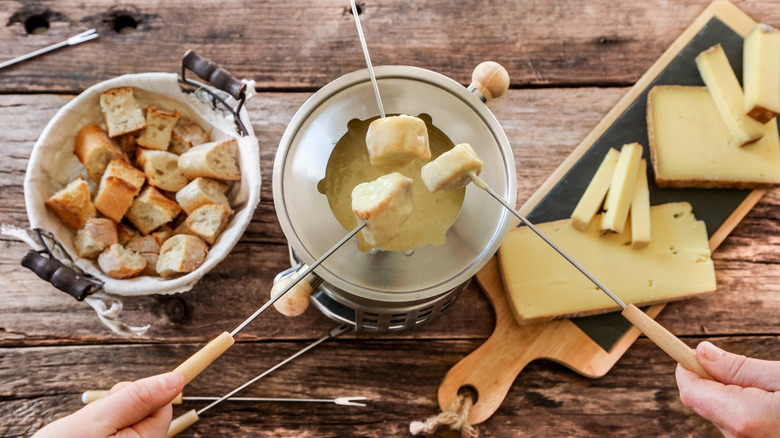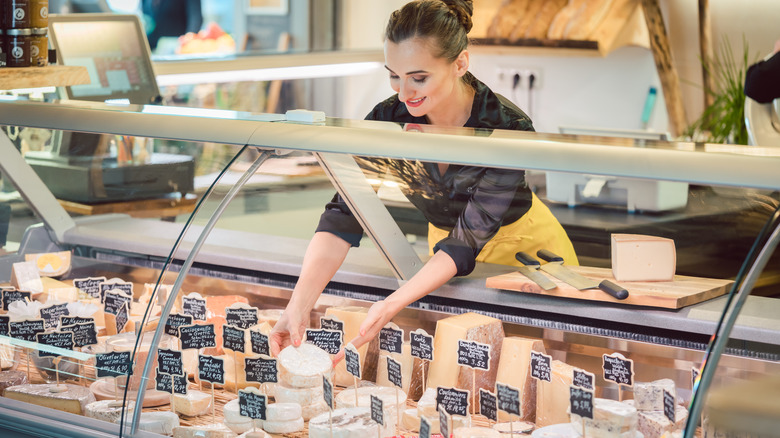Alpine-Style Cheese Is A Must-Have For Buttery, Melty Texture Lovers
The subject of cheese is an extraordinarily vast one. With roughly 1,800 different varieties produced around the world, it's vital to classify the beloved food into groups so that consumers can begin to understand the ins and outs of what they're eating. Cheeses can be grouped by the milk that's used to produce them, whether they're fresh or aged, or their region of production. For instance, alpine cheeses denote any cheese produced in the European Alps mountain range, which covers Switzerland, France, Italy, and Austria.
Most alpine cheeses are made in Switzerland and France, with some of the most recognizable varieties being Gruyère, Emmentaler, and Comté, which all exemplify the classic characteristics of cheese made in this part of the world: buttery, creamy, and gorgeously melty. Alpine cheese does go way beyond these three kinds of cheese, though. Italian fontina and taleggio are also part of the alpine family. In general, these cheeses are made from cow's milk, but each is uniquely distinct from all of the others. Alpine cheese obviously denotes where it is made, but it also signifies the method by which it's produced.
How is Alpine cheese made?
Like any cheese, alpine cheese starts with the milk, aka the cows. In the European Alps, dairy cows enjoy progressive meals, so to speak. Due to weather and terroir factors, the cows graze in pastures that are lower in elevation in the spring, where the wild grasses grow first after long winters. By the time late summer rolls around, the cows are grazing in the mountain meadows further up in elevation. They continue to graze on wild herbs, grass, and flowers through the fall, gradually making their way down the mountain as early winter approaches. They enjoy hay in the comfortable warmth of their barns in the winter.
Alpine cheese starts with unpasteurized cow's milk heated in large copper pots. The separated curds are pressed to release as much moisture as possible and are molded into huge wheels, which aids in the aging process and gives the cheese a longer shelf life. After all, before the days of swift transportation and next-day delivery, it took a while to transport 20 to 80-pound wheels of cheese down rugged mountain roads.
What makes alpine cheese unique?
Because of the harsh weather and treacherous conditions of living high in the mountains, populations were historically sequestered from one another. Therefore, each had their own ways of producing cheese, which resulted in alpine cheeses (even ones produced in the same country) having different flavor nuances and textures. Alpine cheese is usually firm, not soft like chèvre or hard and dry like Parmigiano Reggiano; however, they maintain a smooth consistency when bitten into. The majority of them are meant to be melted and boast rich, yellow color hues (which results from the beta carotene in the milk) and nutty, fruity, or grassy flavors.
Some, like Emmentaler, have distinctive holes, which are the result of natural bacteria producing carbon dioxide. The gas gets trapped and produces both flavor and holes as the cheese ages and firms up. American Swiss cheese may be modeled after alpine cheese, but since it is not produced in the Alps, it is not technically alpine.
How to best enjoy alpine cheese
If you were spending a day on the icy slopes in the Swiss Alps, what better way to warm up than with a pot of hot, melted, stringy fondue for dunking chunks of warm bread and roasted potatoes? A fresh, cool chèvre on top of a baby greens salad just wouldn't do. As you can imagine, most alpine cheeses are made for melting because they do it so beautifully. You can put them inside hot, grilled sandwiches, on top of soup like French onion, or mix them into baked casseroles. Switzerland's famous raclette cheese is meant to be heated until the top layer is melted and then is scraped on top of any meat or vegetables, such as potatoes.
The aforementioned fondue is quite possibly the ultimate dish for anyone who craves melted cheese. It is classically made with two types of alpine cheeses, Emmentaler, which can be substituted with raclette or Appenzeller, and Gruyère, which can be substituted with Comté. You can also experiment with macaroni and cheese or various gratin and quiche recipes using different types as well — wherever you want gooey melty flavor, an alpine cheese can really shine.
Where can you find alpine cheese?
Fortunately, alpine cheese is quite popular all over the world, considering many people tend to enjoy extra creamy, rich, and melty cheese. Gruyère is arguably the most widespread, a cheese most people can now find in their local supermarket in the deli section. Well-stocked stores will also likely have Comté, Emmentaler, and even pre-combined fondue cheese blends that just need to be heated up.
If you're looking for alpine cheese on a wider scale, you may have to visit a specialty cheese shop or a supermarket with a large, extensive cheese counter. Of course, there are also many online retailers that sell an impressive number of hard-to-find alpine cheeses, such as Gourmet Food World and DeLaurenti. You may find domestic cheeses that are described as "made in the alpine style." These are not true alpine cheeses, but they may be worth a try since they have a similar consistency that could work well in a recipe that calls for a good melting cheese.
